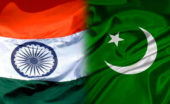Johannah Bernstein post: "eternally proud of my father’s extraordinary aeronautical engineering. legacy. here is a photo of the Canadair Water…
The Ghosts of Gandamak
Written by Diana Thebaud Nicholson // May 8, 2010 // Afghanistan, Britain/U.K., Geopolitics, Government & Governance // Comments Off on The Ghosts of Gandamak
(NYT Op-Ed) THE name Gandamak means little in the West today. Yet this small Afghan village was once famous for the catastrophe that took place there during the First Anglo-Afghan War in January 1842, arguably the greatest humiliation ever suffered by a Western army in the East.
The course of that distant Victorian war followed a trajectory that is beginning to seem distinctly familiar. In 1839, the British invaded Afghanistan on the basis of dubious intelligence about a nonexistent threat: information about a single Russian envoy to Kabul, the Afghan capital, was manipulated by a group of ambitious hawks to create a scare about a phantom Russian invasion, thus bringing about an unnecessary, expensive and wholly avoidable conflict.
Initially, the British conquest proved remarkably easy and bloodless; Kabul was captured within a few months and a pliable monarch, Shah Shuja, placed on the throne. Then an insurgency began which unraveled that first heady success, first among the Pashtuns of Kandahar and Helmand, then slowly moving northward until it reached the capital.
What happened next is a warning of how bad things could yet become: a full-scale rebellion against the British broke out in Kabul, and the two most senior British envoys were murdered, making the British occupation impossible to sustain. On the disastrous retreat that followed, as many as 18,000 East India Company troops and maybe half again as many Indian camp followers (estimates vary), were slaughtered by Afghan marksmen waiting in ambush amid the snow drifts and high passes, shot down as they trudged through the icy depths of the Afghan winter.
The last 50 or so survivors made their final stand at Gandamak. As late as the 1970s, fragments of Victorian weaponry could be found lying in the screes above the village; even today, the hill is covered with bleached British bones. Only one man, Thomas Souter, lived to tell the tale. It is a measure of the increasingly pertinent parallels between the events of 1842 and today’s that one of the main NATO bases in Afghanistan is named Camp Souter.
For the Victorian British, Gandamak became a symbol of the country’s greatest ever imperial defeat, as well as a symbol of gallantry: William Barnes Wollen’s celebrated painting of the Last Stand of the 44th Foot — a group of ragged but determined British soldiers standing in a circle behind their bayonets as the Pashtun tribesmen close in — was one of the era’s most famous images.
For the Afghans themselves, Gandamak became a symbol of freedom, and their determination to refuse to be controlled by any foreign power. It is again no accident that the diplomatic quarter of Kabul is named after the Afghan resistance leader who oversaw the British defeat at Gandamak, Wazir Akbar Khan.
A week or so ago, while doing research for a book on the disaster of 1842, I only narrowly avoided the fate of my Victorian compatriots.
Gandamak backs onto the mountain range that leads to Tora Bora and the Pakistan border, an area that has always been a Taliban center. I was trying to follow the route of the British retreat, but had been advised not to attempt to visit the Gandamak area without local protection. So I set off in the company of a local tribal leader who is also a sports minister in the Karzai government, Anwar Khan Jigdalek. A mountain of a man, Anwar Khan is a former wrestling champion who made his name as the mujaheddin commander against the Soviet Union in the 1980s.
We left Kabul — past the blast walls of the NATO barracks that were built on the very site of the British cantonment of 170 years ago — and headed into the line of bleak mountain passes that link Kabul with the Khyber Pass. At Sarobi we left the main road, and moved into Taliban territory; five trucks full of Anwar Khan’s old mujaheddin comrades, all brandishing rocket-propelled grenades, appeared to escort us.
At Jigdalek, on the 12th of January, 1842, 200 frostbitten British soldiers found themselves surrounded by several thousand Pashtun tribesmen. The two highest-ranking British soldiers were taken hostage. It was 50 of those infantrymen who later managed to break out under cover of darkness to make the final passage to Gandamak. Our own welcome to the village was, thankfully, somewhat warmer.
It was Anwar Khan’s first visit to his home since he had become a minister, and the villagers treated us to a feast, Mughal style, in an apricot orchard. We sat on carpets next to bubbling irrigation runnels, under a trellis of vine and pomegranate blossoms, as course after course of kebabs and mulberry-scented rice were laid in front of us.
It was nearly 5 p.m. before the final pieces of naan bread were cleared away, and our hosts decided it was too late to head on to Gandamak. Instead, we went that evening to the nearest big city, Jalalabad, where we discovered that we’d had a narrow escape: there had been a huge battle at Gandamak that day between government forces and a group of villagers and Taliban fighters. Our gluttony had saved us from driving straight into an ambush.
The battle had taken place on exactly the site of the British last stand. In Afghanistan, imperial history seems to be repeating itself with almost uncanny precision.
The following morning I attended a jirga, or assembly of tribal elders, to which the graybeards of Gandamak had come, under a flag of truce, to discuss what had happened the day before. The story was typical of all I had heard about the current government, and revealed how a mixture of corruption and incompetence had helped give an opening for the return of the once-hated Taliban.
The elders related how the previous year, government troops had turned up to destroy the opium harvest. The troops promised the villagers full compensation, and were allowed to burn the crops; but the money never came. Before the planting season, the villagers again went to Jalalabad and asked the government if they could be provided with assistance to grow other crops. Promises were made; again nothing was delivered.
So, desperate, the villagers planted poppies, informing the local authorities that if anyone tried to burn the crop, they would have no option but to resist: they had children to feed. When the troops turned up, about the same time as we were arriving at Jigdalek, the villagers were waiting for them, and had called in the local Taliban to assist. In the fighting that followed, we were told, nine policemen were killed, six vehicles were destroyed and 10 police hostages taken.
Ever since, I’ve been thinking about the close parallels between the fix that NATO now faces in Afghanistan, and that faced by the British more than 150 years ago. Then as now, the problem is not hatred of the West, per se, so much as a dislike of foreign troops ordering people around in their own country.
There has always been an absolute refusal by the Afghans to be ruled by foreigners, or to accept any government perceived as being imposed on them. Then as now, the puppet ruler installed by the West has proved inadequate for the job: simultaneously corrupt and weak, and forced to turn on his puppeteers in order to retain a fragment of legitimacy in the eyes of his people.
Then as now, there have been few tangible signs of improvement under the Western-backed regime: despite the billions of dollars sent to Afghanistan, Kabul’s streets are still more rutted than those in the smallest provincial towns of Pakistan. There is little health care: for any serious medical problem, patients have to fly to India.
Then as now, the presence of large numbers of well-paid foreign troops has caused the cost of food and provisions to rise, and living standards to fall; Afghans feel they are getting poorer, not richer. Then as now, there has been an attempt at a last show of force in order to save face before withdrawal. As in 1842, this year’s surge has achieved little except civilian casualties, further alienating the Afghans.
It is not, however, too late to learn some lessons from the mistakes of the British in 1842. Then, the British officials in Kabul continued to send out dispatches of delusional optimism as the insurgents moved ever closer to Kabul. Those officials believed there was a straightforward military solution to the problem, and that if only they could recruit enough Afghans to their army, they could eventually march home and leave the pliable regime in place. By the time they realized they had to negotiate and reach a compromise with their enemy, their power had ebbed too far, and the only thing the insurgents were willing to talk about was an unconditional surrender.
Today, too, there is no easy military solution to Afghanistan: even if we proceed with the current plan to spend billions equipping an Afghan Army of half a million troops, that force will never be able to guarantee security or shore up such a discredited regime. Every day, despite the military muscle of the United States, the security gets worse, and the area under government control contracts.
The only answer is to negotiate a political solution while we still have enough power to do so — which in some form or other means talking with the Taliban. Otherwise, we may yet be faced with a replay of 1842. George Lawrence, a veteran of that war, issued a prescient warning in The Times of London just before Britain blundered into the Second Anglo-Afghan War in the 1870s. “A new generation has arisen which, instead of profiting from the solemn lessons of the past, is willing and eager to embroil us in the affairs of that turbulent and unhappy country,” he wrote. “Although military disasters may be avoided, an advance now, however successful in a military point of view, would not fail to turn out to be as politically useless.”



